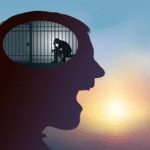Have you ever had feelings of unworthiness from others or anxiety when you aren’t around them? Conversely, you may isolate yourself from others to reduce your need for them or because you see emotional openness as a sign of weakness. Individuals experience social connection in diverse ways, which is referred to as their attachment style. If you are feeling the same, follow these Steps To Healing Your Attachment Issues.
When Mary Ainsworth and John Bowlby, two psychologists, created attachment theory, they first examined the effects of a main caregiver’s absence on children. Since then, it has developed into a strategy for comprehending how people interact and experience relationships in general, often with an emphasis on examining negative emotions.
Tips For Fixing Attachment Issues

1. Identify The Kind of Attachment You Have
Recognizing your attachment style is among the first Steps To Healing Your Attachment Issues. Working over toxic attachments is best accomplished by developing self-awareness.
The four primary attachment types are dismissive, anxious, fearful-avoidant, and secure. Although many individuals have a combination of attachment style qualities, the most appropriate attachment type for you will often be indicated by your feelings and behaviors. To benefit from knowing the fundamentals, you don’t have to be an expert in attachment theory or try to pronounce every word correctly.
Examining your behavior and emotions in the relationships in your life might help you determine your attachment style. Asking yourself questions such as, “Do you often feel anxious or cornered around that person?” is something that many therapists advise. and “Do you find yourself constantly worried about the relationship when you are not with your partner?”
2. Check To See Whether You Have Any Unhealthy Attachments
People with all attachment types, even insecure ones, may have positive and healthy relationship patterns since attachment styles are a continuum. Conversely, individuals with any attachment type have the potential to form harmful attachments; yes, even those with a secure attachment pattern may encounter problematic dynamics in certain relationships.
These are the telltale indications of unhealthy attachments, according to mental health professionals:
- Extremely forceful.
- Oversharing regularly.
- Absent limits.
- Fully committing oneself to the life of the other, staying away from social engagements.
- Excessive concern about what other people think of you.
- Unable to seek assistance.
- Putting a relationship at a distance.
You could be coping with unhealthy attachments if this describes you. Kindness and self-awareness are crucial at this point. Consider yourself to only need to create healthy connection patterns rather than to have “attachment problems.” It’s important to recognize unhealthy attachments and develop positive connections and a stronger sense of self.
3. Journal
Journaling is a solution to How to Fix Attachment Issues. You may think about many relationship-related scenarios, such as disagreement, rearranging plans, or being requested for assistance, and think about your ingrained beliefs.
People may then concentrate on questioning and rephrasing these automatic ideas after they have identified them. Behaviors and emotions are just products of our thoughts. We will not be able to alter these habits if we do not consciously take the time and make the effort to study our thoughts.
This reflection gives you the chance to examine your emotional states and any patterns of avoidance or worry you may be displaying.
4. Identify Your Boundaries And Expectations
Knowing your boundaries and expectations is one of the Steps To Healing Your Attachment Issues. For example, identifying actions you could take as a result of your attachment type might also assist you in avoiding them. If your spouse doesn’t text you back immediately or isn’t as thrilled about something as you are, you could get overwhelmed.
You can get the impression from this that they no longer love you. After you understand how attachment works, you may be able to recognize these moments and, rather than becoming tense, take a deep breath and relax.
5. Speak With A Person You Are In A Good Connection With
Speak with the individuals in your life with whom you have positive relationships as an additional option. This may be a love partner, friend, or relative. It’s critical to keep in mind that you have a healthy attachment in this intimate connection, regardless of your attachment pattern.
This individual may assist you in identifying the problematic attachment behaviors you display in previous relationships. According to Schubert, anybody with whom you have a good relationship may help you understand connections that you’ve previously seen as triggers.
However, don’t allow them to dictate the story either. As you assess your feelings and reactions to various relationships, pay attention to what they have to say and consider it.
6. Notice Your Triggers
Learn to recognize the moments when your attachment wounds reopen. Have a notebook where you may jot down nonjudgmental thoughts on attachment problems. Simply write down short, noncritical notes whenever you get provoked if you’re in a relationship. You may take notes on past relationship patterns even if you’re single.
The intention is to merely raise your awareness of your connection traumas; it is not to condemn or place blame on anybody, even yourself. As an example, you might write:
- “I feel triggered when my partner isn’t showing love.”
- “I feel irritated when my partner acts clingy.”
- “I get angry when my partner wants to get intimate even when I’m not in the mood.”
- “When my spouse disregards my wants and needs, it breaks my heart.”
You will be able to concentrate more on treating the delicate inner wounds the more aware you are of your triggers.
7. Know Your Needs
Examine your attachment wounds by keeping a diary. Every wound could have a connection to a particular childhood event or pattern.
Write in your notebook on how each wound impacted you as a youngster to further explore the subject of each wound. After that, go on to blog about how these patterns show up in your past or present love relationships. As always, adopt a kind, impartial stance that encourages personal development.
You will be better able to accept and communicate your wounds to your spouse as a result of this heightened awareness. For instance, you could remember that one or both of your parents were often preoccupied with work-related matters and were hardly ever attentive.
Then you could realize that you feel rejected and disregarded when your spouse multitasks during conversations. This connection will assist you in realizing how crucial it is to have a spouse who is prepared to provide you with thoughtful, concentrated attention.
8. Talk To Your Partner
As you are making every effort to resolve attachment difficulties, it would be beneficial if you also had a conversation with your spouse. It is important to remember that each partner in a relationship has an attachment style that might affect how they behave.
You may discuss your desired changes and how you behave with them after you have a better understanding of your style. If they are interested, you may also share the facts you found via your investigation with them. This might improve your mutual understanding and communication.
9. Seek Professional Help
Talking to a therapist is an answer to How to Fix Attachment Issues. You may go to a therapist if you want to learn more about fixing attachment difficulties if you are looking for a partner to spend time with, or if you are in a relationship and would want to work out any conflicts you have.
You may be displaying signs of mental health issues that are also treatable. When you meet with a professional, they may provide you with extra information and professional guidance about the behaviors that your attachment type may lead you to display. They should also teach you how to set objectives and alter your thinking so that you can behave differently when you want to.
Why Are Attachment Problems Important?
Unhealthy behaviors connected to attachment wounds may often be more stable during stressful periods since a person’s “worst” attachment troubles are often exacerbated during these times. However, since “opposing” wounds worsen attachment wounds, some attachment patterns are often poisonous to one another.
For instance, a partner with an avoidant attachment style, which is focused on pushing others away, is likely to be a major source of triggers for someone with an anxious desire to connect and attach. While attachment wound healing may occur in any conscious connection, several combinations make it far more difficult.
It’s possible to modify your attachment style, which is wonderful news. You can take Steps To Healing Your Attachment Issues to change into more positive relationship dynamics if you don’t have a stable attachment type. Significant improvements may also happen in relationships when both partners actively work to mend their relationship wounds.
FAQs
Q: What causes attachment issues in humans?
A: The majority of kids who suffer from attachment disorders experienced serious issues or challenges in their early connections. They could have experienced mental or physical abuse or neglect. Some people have received subpar care while living in an institution or another kind of out-of-home placement.
Q: Can you resolve attachment problems?
A: Nonetheless, a person’s attachment style might shift from nervous to secure. A person may guarantee that they have safe, healthy connections with other people by having corrective emotional experiences.
Q: Are attachment issues harmful?
A: Future social relationships may be hampered by attachment issues, which may result in personality disorders and trouble sustaining self-esteem. Understanding attachment disorders may help explain why individuals act in certain ways and interact with others.












I wanted to thank you for this great read!! I definitely enjoying every little bit of it I have you bookmarked to check out new stuff you post…
Thank you so much! I’m really glad you’re enjoying the content, and I appreciate you bookmarking it to stay updated. I’ll keep the posts coming, so feel free to check back anytime! Thanks again for your kind words! 😊
There is obviously a bundle to know about this. I think you made certain good points in features also.
Thank you! I’m glad you found the content informative and the points helpful. There’s always more to explore, and I appreciate you taking the time to read and engage!
This article is very interesting and full of useful information! The
website is a great place to find quality content.
Thank you so much for your kind words! I’m really glad you found the article interesting and helpful. It’s always great to know the content is making a positive impact.
Terrific work! This is the type of info that should be shared around the internet. Shame on Google for not positioning this post higher!
Thank you so much for the encouraging words! I’m truly glad you found the content valuable. It means a lot to hear that you believe it deserves wider reach. And yes — sharing helpful information is what it’s all about. Feel free to share it with others too, and stay tuned for more insightful posts!
I?¦ve recently started a site, the info you provide on this site has helped me greatly. Thank you for all of your time & work.
That’s wonderful to hear — thank you so much for the kind words! I’m really glad the information has been helpful as you start your site. Wishing you all the best with your project.
I am a 77-year old man, and it was my sweet granddaughter who showed me your website. Since then, it feels like a new life for me. Your topics are simply amazing and speak directly to the heart. At this age, I don’t look forward to many things, but your work gives me hope and joy. I truly wish with all my heart that you achieve great success in life. If life allows, I wish I could meet you just once and thank you in person from the bottom of my heart. You’ve made a difference in my life, and for that, I’m truly grateful. God bless you.
Thank you — from the deepest place in my heart — for such a beautiful, heartfelt message. Your words truly touched me, and I’m honored to know that something shared here brought you joy, hope, and a sense of connection.
Please thank your sweet granddaughter for introducing you to the site — what a special bond you both must share. And to hear that these words mean something to you at this stage of life is the highest compliment anyone could give.
Even if we may never meet in person, please know that your message has already created a meaningful connection. It’s people like you who make this work truly worthwhile.
Wishing you warmth, peace, and good health always. And may each day continue to bring you moments that feel light, joyful, and full of heart. God bless you, too.
You made some respectable points there. I appeared on the internet for the issue and located most people will associate with with your website.
Thank you — that truly means a lot! I’m glad the points resonated with you, and it’s encouraging to know others are finding alignment with the ideas shared here.
I’d incessantly want to be update on new articles on this web site, saved to my bookmarks! .
That’s wonderful to hear — thank you!
I truly appreciate you bookmarking the site. New articles are on the way, so stay tuned and feel free to drop by anytime!
Way cool, some valid points! I appreciate you making this article available, the rest of the site is also high quality. Have a fun.
I am glad to be one of several visitants on this great website (:, appreciate it for posting.
Really appreciate your kind words! Glad you found value in the content.